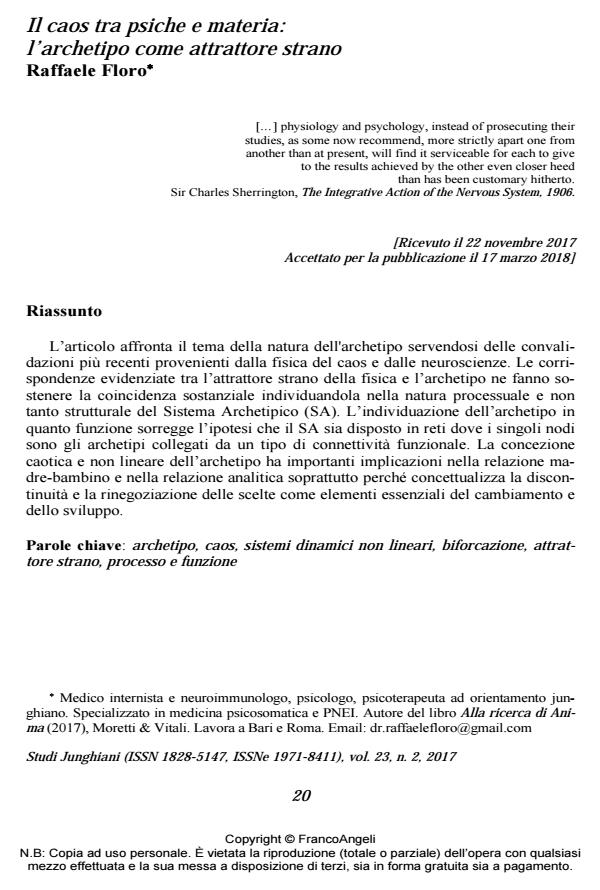Chaos between psyche and matter: the archetype as a strange attractor
Journal title STUDI JUNGHIANI
Author/s Raffaele Floro
Publishing Year 2018 Issue 2017/46
Language Italian Pages 29 P. 20-48 File size 382 KB
DOI 10.3280/JUN2017-046002
DOI is like a bar code for intellectual property: to have more infomation
click here
Below, you can see the article first page
If you want to buy this article in PDF format, you can do it, following the instructions to buy download credits

FrancoAngeli is member of Publishers International Linking Association, Inc (PILA), a not-for-profit association which run the CrossRef service enabling links to and from online scholarly content.
The article deals with the nature of the archetype using the most recent validations coming from the physics of chaos and neuroscience. The correspondences highlighted between the strange attractor of physics and the archetype make it sus-tain the substantial coincidence identifying it in the procedural nature and not so much structural of the Archetypal System (AS). The identification of the archetype as a function supports the hypothesis that the AS is arranged in networks where the individual nodes are the archetypes connected by a type of functional connectivity. The chaotic and non-linear conception of the archetype has important implications in the mother-child relationship and in the analytic relationship above all because it conceptualizes the discontinuity and renegotiation of choices as essential elements of change and development.
Keywords: Archetype, chaos, non linear dynamic systems, biforcation, strange attractor, process and function
Raffaele Floro, Il caos tra psiche e materia: l’archetipo come attrattore strano in "STUDI JUNGHIANI" 46/2017, pp 20-48, DOI: 10.3280/JUN2017-046002